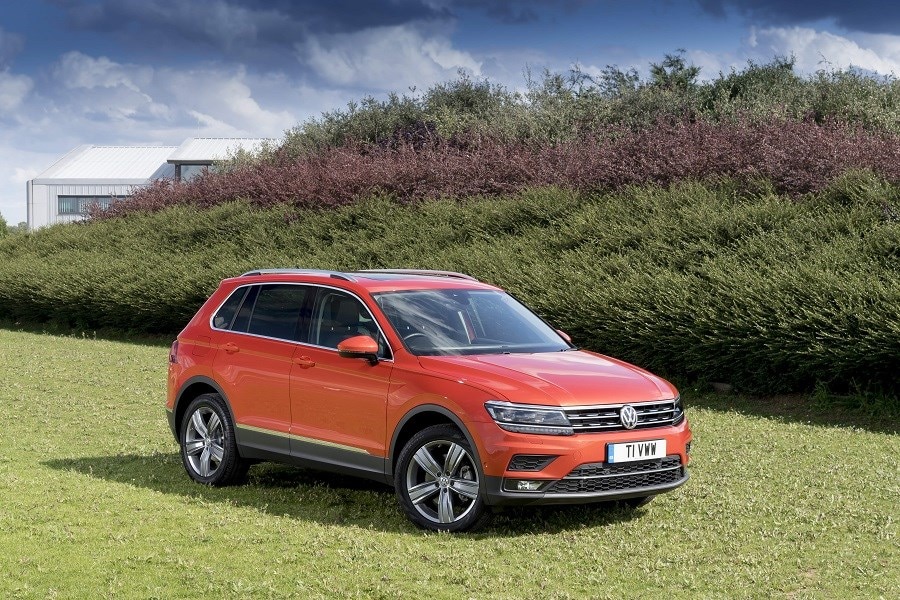Model Review
Jumping ahead of the curve, Volkswagen unveiled its Tiguan crossover in 2007 as the firm’s second SUV after the larger Touareg. Sales of the model started in January 2008, with the Passat-based model — commonly incorrectly thought to be based on the Golf — setting new standards for refinement in its class. It also earned a reputation as a very practical model, and was offered with a lengthy list of engine options led by diesel units.
From 2009, it was offered with a high-spec and sporty-looking R-Line variant, which featured revised styling to emphasise its performance-inspired image and was only offered with more powerful engines to symbolise its high position in the range.
In 2011, the Tiguan was facelifted to feature sharper lines, as well as new L-shaped rear lights. Further safety kit was also introduced.
Latest model
With the first Tiguan being a huge success story for Volkswagen, it didn’t take too long for the firm to produce an all-new second-generation model, which made its debut at the 2015 Frankfurt Motor Show.
The Tiguan was the first Volkswagen to be built on a new platform – known as MQB – which has gone on to underpin the vast majority of the Volkswagen Group’s cars since. The platform not only allows the new Tiguan to be lighter; it also allows it to be easily adapted to feature electrified powertrains, although VW is yet to take advantage of this.
The second-generation Tiguan got a new look, featuring a more boxy and rugged-looking image than the first car, as well as a larger wheelbase. This allows it to offer 145 more litres of boot space compared to its predecessors.
Further highlights include new safety features — such as automatic emergency braking, lane-keep assist and post-collision braking — as well as new connectivity features including Apple CarPlay and Android Auto through the touchscreen’s App Connect system. Sales for the Tiguan kicked off in July in 2016, with the model available in a broad range of trims from launch.
In 2018, Volkswagen introduced a seven-seat Allspace variant to the line-up, which offered an alternative to the Skoda Kodiaq, and in 2019, the firm introduced a new Match trim level alongside a range-topping R-Line Tech grade, which includes an electric boot and an around-view monitor. A punchy 227bhp 2.0-litre TSI petrol engine was also added.
The Tiguan has been an enormous success for Volkswagen, being the third best-selling car in the UK after the hugely popular Golf and Polo hatchbacks. The 5,000,000th example rolled off the production line just 10 years after it debuted, which is a big credit to the crossover.
Value for money
Compare the Volkswagen Tiguan to less premium rivals, such as the Nissan Qashqai and Skoda Karoq, and it does look quite expensive. Entry-level S versions start from £24,545, although even these base models are well-equipped. Standard kit includes 17-inch alloy wheels, electrically-operated and heated mirrors and an eight-inch touchscreen with smartphone connectivity and DAB radio. You have to opt for the £27,305 Match grade before you get satellite navigation, though. Top-spec cars are expensive, with range-topping R-Line versions costing nearly £40,000, which is a lot of money by anyone’s measure.
On the used market, the first-generation Tiguan is available from as little as £3,000 for a high-mileage example. Newer models with fewer miles on the clock start from around £4,500. We saw a 2009 example fitted with the 2.0-litre diesel engine, in SE trim and with 4Motion all-wheel-drive fitted for £6,000. With 75,000 miles on the clock, similar cars would make a great buy.
As for the latest model, at the time of writing you could pick up a second-gen 2016 example in S trim with 40,000 miles on the clock for £15,000, and around £16,500 for a higher-spec SE model.
As for nearly-new models, you can expect to save £4,000 off the price of a one-year-old car that’s covered around 10,000 miles.

